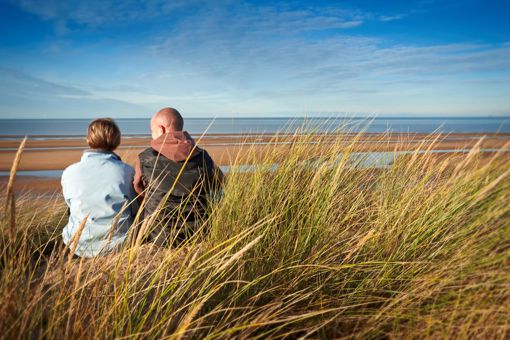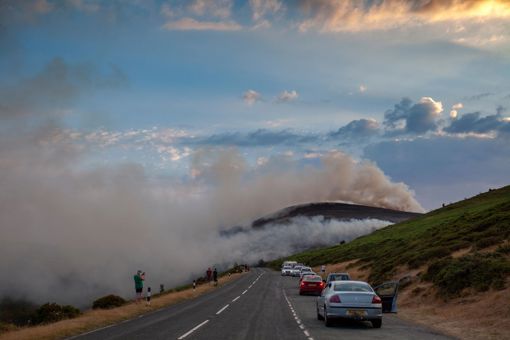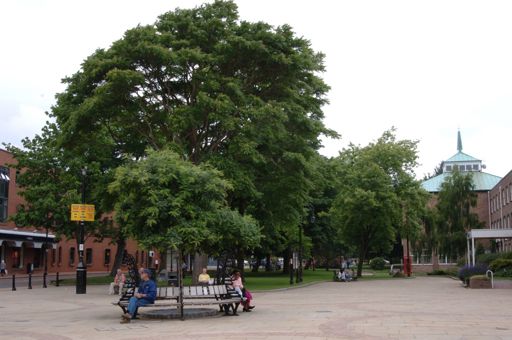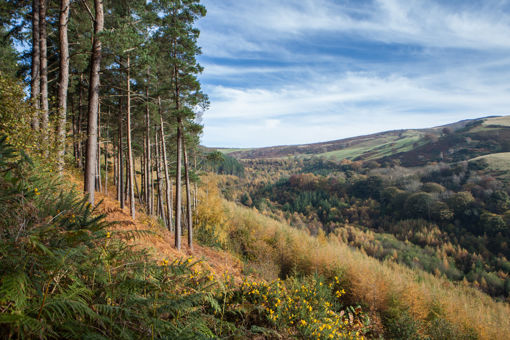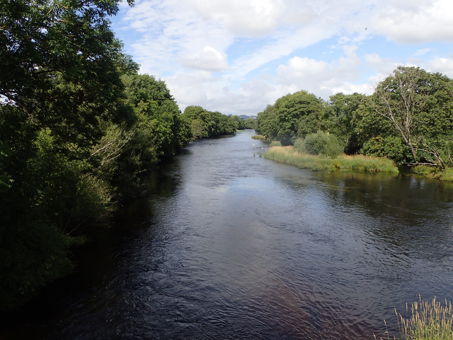Promoting the resilience of ecosystems in maintaining and enhancing biodiversity
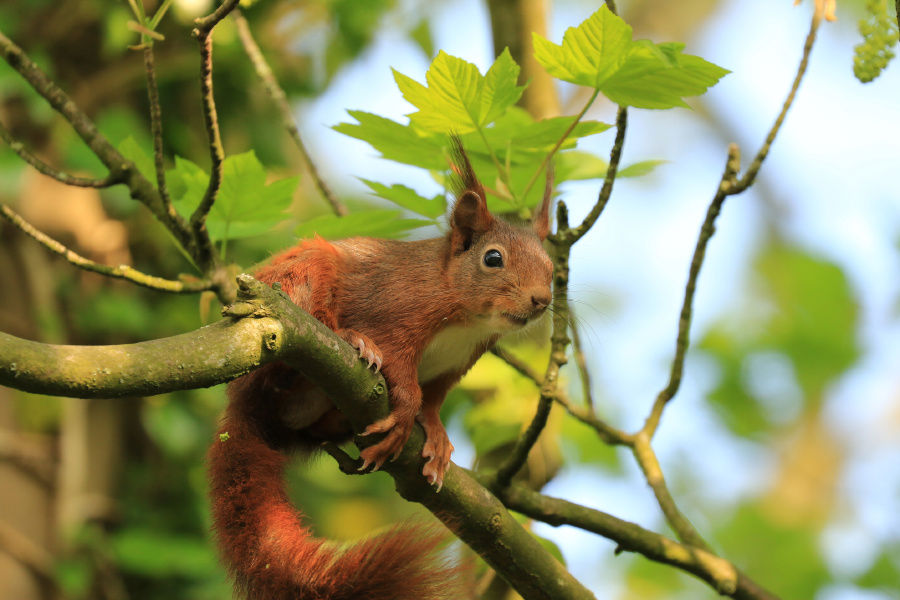
Image by Johnathon Rothwell
Why this theme?
In North East Wales, there is tremendous pressure on how we use our land. It comes from industry, farming, housing, urban sprawl, rural land use, renewable energy schemes, even transport. There are examples of a direct relationship between poor environments and more deprived communities. Our wildlife is also in decline, with some species at risk of extinction.
At a series of engagement events staged by Natural Resources Wales (NRW) in July, the message was clear – we need to enhance our biodiversity. Equally importantly, we need to maintain and conserve our existing wildlife and protected sites.
It isn’t just the way we manage our land that is putting nature under pressure. Climate change is also having a huge effect, as is pollution. Although the variety of pollutants has reduced dramatically over recent decades, pollution continues to have an impact on sensitive habitats, together with fresh and marine waters, not just in North East Wales but across the entire UK.
Despite boasting substantial urban settlements, North East Wales supports a rich variety of ecosystem types which form the essential building blocks to a resilient, natural environment. In fact many of our urban areas are also important havens for wildlife. The only place in Wales where you’ll find one particular weevil, a type of beetle, is Wrexham Industrial Estate. Likewise, one of the main habitats for great crested newts in North Wales are disused quarries in Wrexham.
North East Wales is an area that has high upland habitats, ash woodland, limestone grasslands, historic mines and wide, open estuaries. There are protected sites such as the River Dee, Halkyn Mountain, the Dee Estuary and the Berwyn and South Clwyd Mountains. Combined, they support the crown jewels of our biodiversity, harbouring threatened and protected bird species such as curlew, hen harrier and little tern. Red squirrels can still be found in Clocaeonog Forest, albeit in low numbers. Likewise, dormice. Otters are widely distributed across North East Wales.
The Liverpool Bay Special Protection Area (SPA) is of international importance for wintering waders including redshank and knot, along with breeding common tern. Gronant Dunes and Talacre Warren Site of Special Scientific Interest (SSSI) are home to Wales’ only colony of little tern, while providing habitat for sand lizards and natterjack toads. Grey seals also inhabit the mouth of the Dee.
Our wooded valleys and associated buildings provide ideal habitats for bats, including significant numbers of the lesser horseshoe bat. Serotine bats are also now found in certain sites in and around the Vale of Clwyd. On the ground, the county of Wrexham is home to Wales’ largest lowland bog, the Fenn’s and Whixall Mosses, currently being restored after years of peat extraction for horticultural and gardening purposes. This contains many rare plants and animals including bog rosemary and water voles.
 © Crown copyright (2019) Wales
© Crown copyright (2019) Wales
Promoting the resilience of ecosystems in maintaining and enhancing biodiversity helps to deliver against the following Natural Resources Policy (NRP) priorities:
Reverse the decline in biodiversity
In the State of Nature report 2019, it was revealed that wildlife in Wales continues to decline, with 17% of species at risk of extinction. Since the 1970s, butterflies and moths have suffered a 52% decline in Wales. Species at threat in North East Wales include curlew, Atlantic salmon, black grouse, red squirrel and great crested newt.
Develop resilient ecological networks
We need to make space for nature. Our protected sites need to be better managed. We need more of them, preferably joined-up through a network of local nature sites. Connecting and enhancing habitats will help our wildlife to become more resilient, especially in the face of climate change.
Improve the quality, and ensure the quantity, of our water
In North East Wales, two main catchments dominate – the River Clwyd and the River Dee. Most of the River Clwyd catchment is within North East Wales with one major tributary, the River Elwy, lying mainly in NRW’s North West area. The upper Dee also stretches into the North West area, with the lower catchment flowing over the English border into the Cheshire Plain and the Dee estuary.
Nearly three million people get their drinking water from the Dee, many of them living in North West England. The strategic importance of the Dee as a potable water source, and the risk posed to it from pollution, has led to the river becoming one of the most protected in Europe and, as of 1999, a designated Water Protection Zone.
The Clwyd has its headwaters in Clocaeonog Forest, while the Elwy rises to the west on the Denbigh Moors. Agriculture dominates the largely rural Clwyd catchment. Part of the lower catchment is a nitrate vulnerable zone for both surface and groundwater. In 2015, 68% of all freshwater water bodies (as defined by the Water Framework Directive) were not achieving good or better overall status in North East Wales. Contributory factors included:
- Physical modification, responsible for 22% of failures due to pressures such as barriers to fish migration (eg weirs)
- Pollution from sewage and wastewater, responsible for 22% of failures
- Pollution from rural areas (including land management practices as well as impacts from other uses, for instance horses/stables, golf courses), responsible for 24% of failures
- Pollution from towns, cities and transport, responsible for 8% of failures
- Pollution from mines, responsible for 6% of failures
The beach at Rhyl is surrounded by the town itself and located next to the mouth of the River Clwyd. Here, the bathing water designation can be subject to pollution caused when heavy rain washes faecal material into the sea from livestock, sewage and urban drainage by way of rivers and streams. Since 2015, the bathing water has been designated as ‘sufficient’. It almost goes without saying that the bathing waters along the coast are vital to the local tourist economy.
Ensure healthy populations of fish
The Dee supports an internationally important salmon fishery. Sea trout fishing has also become more prevalent over recent years. In addition, the Dee is one of only four index rivers across the UK from which biological information is gathered. The number of salmon eggs deposited in 2018 was below the conservation limit. As a result, the Dee is currently classified as ‘at risk’. The forward projection to 2023 shows some potential improvement in egg deposition numbers, although by that time the classification is still expected to be ‘probably at risk’. The sea trout population is also currently classified as ‘probably at risk’ and is expected to remain that way looking towards 2023.
In 2018 the Clwyd was classified as ‘at risk’ for salmon, with a projection of still being ‘at risk’ in 2023. Sea trout stock was also classified as ‘at risk’ in 2018 and is expected to stay that way heading towards 2023. Anglers did, however, report 2019 as being a good year for sea trout fishing, with over 1,000 caught across the Clwyd catchment area.
Improving the management of existing woodlands and more widespread use of trees
Besides being good for wildlife, woodlands and forests can also connect areas of valuable habitat. A landscape connected by new and existing woodlands can only help maintain and enhance biodiversity. Trees planted in the right places support biodiversity, with urban trees having the potential to sustain and enhance urban biodiversity and reduce biodiversity loss. The emphasis is, however, on the right places as not all wildlife benefits from tree planting. Sensitive planting should ensure that important habitats already storing significant carbon, or supporting priority habitats and/or species, aren’t planted with trees where the environment effects would be detrimental.
Maintain productive capacity/improve biosecurity
Invasive non-native species have been estimated as costing the Welsh economy £128 million per year. In North East Wales, such species include Japanese knotweed, Himalayan balsam, grey squirrel and Chinese mitten crab.
Sitka spruce is one of the most economically important forestry crops in Wales. While natural generation in plantations benefits the forestry industry, self-seeding outside these plantations can have an impact on open upland habitats and protected sites.
In North East Wales, we have some very important upland mixed ash woodlands. Tree diseases such as ash dieback will have a significant effect on the many species of wildlife associated with ash woodland and ash amenity trees.
Climate change adaptation
Biodiversity plays an important role in regulating the climate, thus contributing to climate change mitigation and adaptation. At the same time, climate change affects biodiversity in many ways through complex interactions among and between species and their habitats. It is impossible, therefore, to address biodiversity loss without addressing climate change. However, it is equally impossible to tackle climate change without also addressing biodiversity loss.
What would success look like?
Our vision for the future includes:
The creation/extension of strategic stakeholder partnerships to advise on biodiversity management
There are local partnerships for nature operating in all three counties across North East Wales. BioNet, part of the Royal Society for Biology, already links biodiversity representation among the local authorities. The opportunity exists to widen the net to include land managers, businesses, the health sector and others to pioneer new approaches surrounding biodiversity.
NRW exploring how its own assets can be maintained to enhance biodiversity
NRW will explore opportunities to imbed biodiversity enhancements on all the assets it manages (providing such enhancements aren’t detrimental to the performance of the assets in question).
Managing protected sites
NRW is currently undertaking a national baseline evaluation project to deliver ‘indicative’ condition assessments for all our protected sites. The resulting evidence will help prioritise approaches regarding habitat, species and geodiversity (in a future risk-based approach), while also helping with place-based site management.
 © Crown copyright (2019) Wales
© Crown copyright (2019) Wales
Managing invasive non-native species
We need to develop a strong sense of shared responsibility between key stakeholder organisations, land managers and communities in order to reduce the threat posed by invasive non-native species which, by their very nature, spread irrespective of county boundaries. With the Dee and Clwyd river catchments traversing both NRW’s North East Wales and North West Wales areas (the former also stretches into England), it is important that we work together.
NRW exploring opportunities to build better biodiversity resilience into our pre-application and permitting processes
This could include requirements being put on operators to enhance biodiversity once a site is closed, for instance by planting native species as part of sustainable reclamation, or setting biodiversity conditions on sewage work permits.
Prioritising threatened species
There are several iconic species under threat in North East Wales including curlew, Atlantic salmon and black grouse. These should become the focal point of a regional conservation campaign that connects people back to nature, while helping improve associated habitats. Where habitats and landscapes criss-cross, we will collaborate with other Area Statements and English-based stakeholders.
Increasing resilience by connecting protected sites through local green infrastructure
We need more local wildlife sites to form part of a connected landscape featuring wildlife buffers, corridors and stepping stones acting as links between national designated sites (such as nature reserves and SSSIs). This will help ensure that our wildlife is more resilient to climate change.
Improving hedgerows and opportunities for farmland trees
Although hedges are intended primarily for stock management or to mark boundaries, they are also a resource for habitats, something that’s particularly important to farmland species. A significant proportion of new trees can be integrated into existing land uses, for example by planting in field corners, headlands and hedgerows on farms, boosting agricultural productivity while also delivering carbon and wildlife benefits.
Restoring peatland habitats for carbon storage, water quality, water quantity and biodiversity
Peatland habitats help regulate our climate and water cycle, both fundamental to our well-being. Deep peat soils are important for mitigating climate change as they take up and store atmospheric carbon. In North East Wales, we need to further assess the condition of some of our peatland habitats and, where appropriate, repair the damage already done to our natural carbon sinks. Denbigh Moors and Berwyn offer some of the most extensive concentration of natural blanket bog in Wales. Several lowland raised bog sites exist in the area, the largest of these being the Fenn’s and Whixall Mosses on the border between the county of Wrexham and England. This would involve us collaborating with the NRW’s Mid Wales area and organisations in England. Incidentally, only 30% of Welsh peat soil is considered to be in ‘good condition’.
Change LED lights to mitigate insect loss and protect dark skies
Light pollution is a significant yet often overlooked driver in the rapid decline of insect populations. Excessive outdoor lighting disturbs nocturnal wildlife, affects birds, insects and other species. Reducing external lighting to 3000K LED is economically viable, energy efficient and a way of arresting that rapid decline.
An environmental credit scheme for businesses
An environmental credit scheme would encourage businesses to operate in a more environmentally friendly way. Businesses would generate biodiversity credits from management actions that improve biodiversity on their site. These credits would then accumulate and lead to benefits such as tax relief and local accreditation.
Understanding carbon sequestration
In North East Wales, we need to collate information and identify knowledge gaps on carbon stocks and sequestration, both in vegetation and soils, for important terrestrial, coastal and marine habitats. By understanding and communicating carbon sequestration values for a whole series of habitats and land uses, we can make informed management decisions that safeguard and improve carbon stores.
Improving habitat management to reduce the risk of wildfires
In the summer of 2018, a fire at Llantysilio in Denbighshire burned for 40 days, costing North Wales Fire and Rescue Service £290,000 to manage and extinguish. It caused considerable damage to a mountain’s habitat and soil structure, as well as being a cause of great concern to local residents. Effective management of upland landscapes through closer collaboration between statutory bodies, landowners, graziers and communities should reduce the risk of similar fires occurring. Some of these landscapes traverse the NRW’s Mid and North West Wales areas and would therefore require collaboration.
Creating a ‘Story Map’ engagement tool
The creation of a ‘Story Map’ public engagement tool would enable people to follow progress, showing evidence and success against the theme. This, in turn, could enable further change, influence opinion and raise awareness. The maps would be designed for any audience with access to the internet.
Developing case studies
Stories matter. They engage us, therefore we learn from them. We need to develop and share case studies about biodiversity projects that outline the problems, interventions and showcase the successes. By doing so, we can highlight further opportunities surrounding biodiversity. These case studies should also tackle the common misconception that environmental benefits are delivered at a cost to economic development.
Who have we worked with to date?
In total, 148 people representing 68 organisations across 28 different sectors (with wide-ranging remits) attended five engagement events staged by NRW over the course of 2019. All but one took place at local community venues, the exception being the larger, civic setting of Denbigh Town Hall in July. We also engaged with senior management and portfolio leads of all three local authorities in North East Wales.
Dafydd Thomas, an external well-being consultant, was present at each event which featured an innovative procedure called ‘meeting sphere’ designed to encourage participants to share their true feelings, prioritise what really mattered to them, and work together to get results.
At some of the engagement events, it was clear that reaching a consensus among stakeholders was not going to be easy. Discussions were often passionate, with not enough time available to address some of the big issues. This is something we are aware of and will address as our engagement continues. However, some extremely worthwhile opportunities to promote the resilience of ecosystems and maintain and enhance biodiversity were identified.
Despite many sectors being well represented, NRW is aware that we need to broaden the appeal of Area Statements beyond those who we routinely engage with. We would like communities and the non-environmental sector to be involved (up until now, non-environmental sector participants accounted for only 15% of those engaged). Working together with Flintshire County Council, invites were sent to approximately 2,500 small and medium-sized businesses, yet the response to date has been disappointing. We have, however, worked with the Young Wales organisation which ran a series of workshops across North East Wales that will contribute to the Area Statement and, in the process, engage and empower young people.
We have always recognised how important engaging with communities is, and we are in the process of considering how best to do that in order to make the most of the opportunities that have been discussed to date. Rest assured, NRW will be encouraging and supporting communities to come together to form groups that share common goals or purposes, helping them shape and deliver the Area Statement so that it benefits their localities.
What are the next steps?
Throughout 2020 we will continue to work with stakeholders as we start to deliver the opportunities identified through the Area Statement. We expect further opportunities to arise as the engagement process continues.
Actions for NRW and stakeholders include:
- Looking to broaden the appeal of the Area Statement process, encouraging organisations to understand that this is something they can shape, influence and engage with
- Keeping the Area Statement constantly under review, reflecting new ideas and evidence that comes to light, along with discussions which take place
- Continuing to map our stakeholder engagement carefully, reaching out to sectors and organisations we have not yet talked to
- Supporting communities to come together and form groups that contribute to the Area Statement, getting more of a sense in the process about whether the opportunities being identified are in fact the right ones
- Encouraging a diverse range of stakeholders to come together and form a ‘theme’ focus group to further develop the opportunities identified
- Encouraging new ways of working, new relationships to be formed, and continuing to build trust with our existing partners
- Incorporating feedback from the Youth Wales engagement sessions into the Area Statement
- Signposting partners and communities towards funding opportunities that support the delivery of the Area Statement, including NRW’s own grant funding programme
- Raising specific points and discussions around policy relating to Area Statements, in our role as principal adviser to the Welsh Government
- Improving our use of social media, while considering other innovative ways to involve people in the Area Statements process
- Encouraging better inter-portfolio working across councils and other organisations, with the aim of maximising biodiversity outcomes
- Setting realistic yet meaningful, measurable targets for ecosystem resilience
How does what we’ve proposed deliver Sustainable Management of Natural Resources (SMNR)?
The principles underpinning the Sustainable Management of Natural Resources (SMNR) are pivotal to the Area Statements process. At the heart of its development has been our collaborative engagement with a broad range of partners and stakeholders, both existing and new. We have tried to start conversations that matter, asking people to talk to people they don’t know, or would never normally speak to. By doing so, it became clear that many shared a similar vision of the future, one that ultimately laid the foundations for our five themes. While some of those conversations were challenging, they always proved worthwhile and productive.
This process has helped us collaboratively define the problem and gain an understanding of the opportunities and potential actions, prior to deciding what needs to be done to achieve our shared ‘vision’. This represents a significant change in how NRW works. In the past we may, on occasion, have gone ahead with our preferred options without engaging or seeking any kind of consensus. The challenge now is to work together with our partners, stakeholders and communities in moulding, and ultimately delivering, these opportunities.
The Area Statement will allow us all to make clear, evidence-based decisions, drawing not only on information that we hold but also evidence our partners provide. Much of the data will be made available to all through NRW’s new data portal. There is a strong relationship between the resilience of ecosystems in maintaining and enhancing biodiversity, the other four themes which make up the North West Wales Area Statement, and the opportunity to deliver multiple benefits that interlink. This, alongside some of the evidence that our stakeholders have gathered, should ensure that Area Statements will be a vital cog in the development of local development plans. We do, however, appreciate that there are still gaps in our evidence, but we’re working to plug them.
Furthermore, we know that we need to protect our ecosystems and the services they provide by building resilience. There is a strong relationship between the resilience of ecosystems in maintaining and enhancing biodiversity, our other four Area Statement themes, and the opportunity to deliver multiple benefits that interlink. All these themes are designed to make our ecosystem services more resilient, to mitigate against climate change, and to help our communities adapt to a changing climate. Again, some of the detail surrounding how best to take these opportunities forward have yet to be addressed. However, we know that many are scalable either by following the North East Wales path defined here, or by taking more of a regional approach in tandem with North West Wales.
 © Crown copyright (2019) Wales
© Crown copyright (2019) Wales
How can people get involved?
In North East Wales, we envisage that people will be able to get involved in the debate surrounding biodiversity through further engagement. Details will be announced as the Area Statements process evolves. Watch this space, in other words. Should you wish to find out more, please don’t hesitate to complete the following form or email us at northeast.as@naturalresourceswales.gov.uk or northeast.as@cyfoethnaturiolcymru.gov.uk

